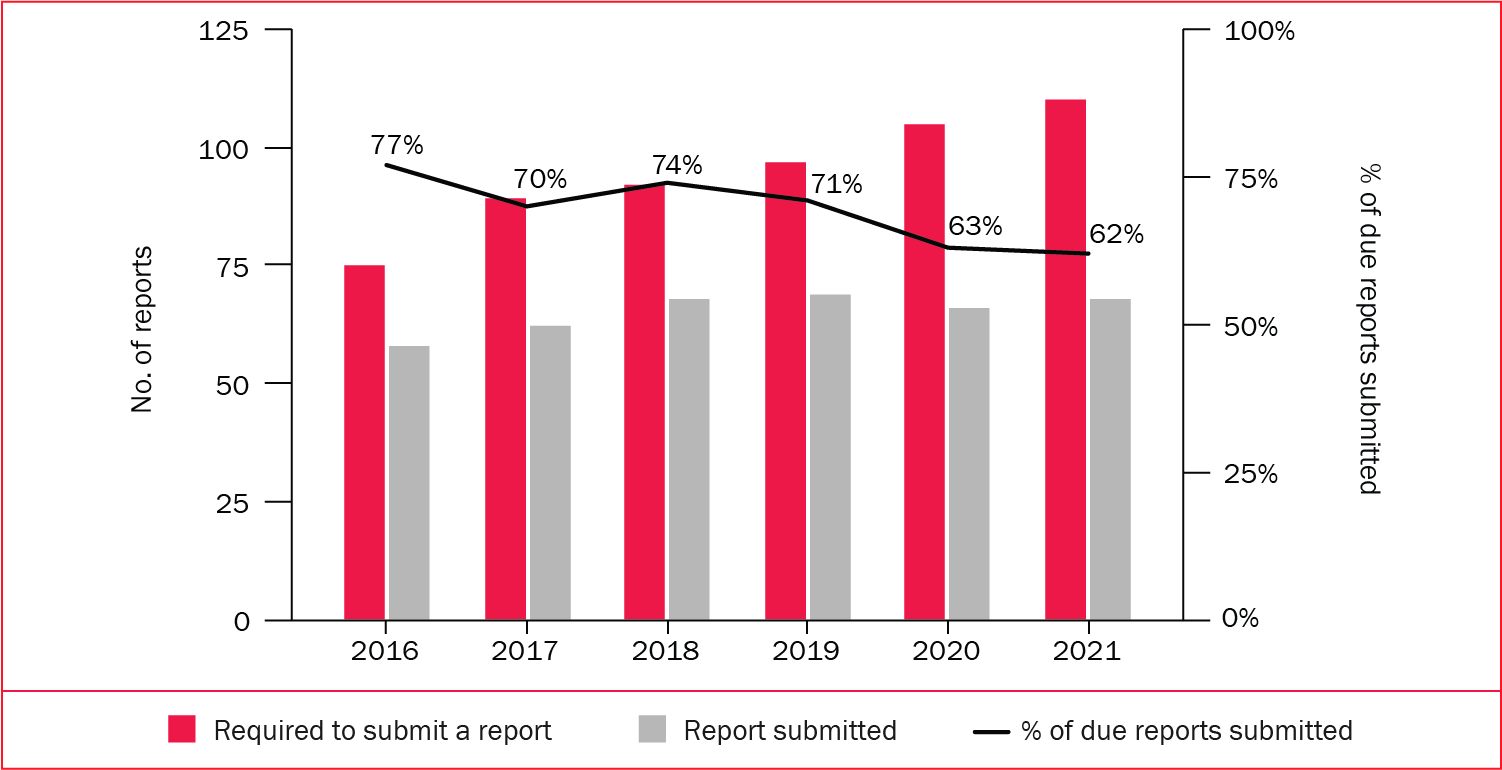12. Dual-use and arms trade controls
Overview, Mark Bromley
I. The Arms Trade Treaty, Giovanna Maletta and Lauriane Héau
II. Multilateral arms embargoes, Pieter D. Wezeman
III. The role and impact of multilateral trade restrictions on Russia and Belarus, Mark Bromley
IV. The multilateral export control regimes, Kolja Brockmann
V. Developments in the European Union’s dual-use and arms trade controls, Kolja Brockmann, Mark Bromley and Giovanna Maletta
Global, multilateral and regional efforts continued in 2022 to strengthen controls on the trade in military items and in dual-use items relevant for conventional, chemical, biological and nuclear weapons and their delivery systems. However, Russia’s invasion of Ukraine in February 2022 significantly disrupted or affected states’ efforts in the field of coordinated export measures.
The Arms Trade Treaty
The eighth conference of states parties to the 2013 Arms Trade Treaty (ATT) in August 2022 focused on post-shipment controls and convened the Diversion Information Exchange Forum for the first time. As in previous years, levels of reporting declined. Despite the steady but slow growth in the number of states parties, significant gaps in membership remain, particularly among states in Asia and the Middle East.
Number of arms trade treaty states parties submitting annual reports, 2016–21

Multilateral arms embargoes
During 2022, 14 United Nations embargoes, 22 European Union (EU) embargoes and 1 League of Arab States embargo were in force. A UN partial arms embargo imposed on Haiti, initially proposed by China, was the only new multilateral arms embargo in 2022 and the first new UN arms embargo since 2018. The level of international consensus around decisions to lift or extend UN arms embargoes deteriorated in 2022, with disagreements between, on the one hand, China, Russia and several like-minded African states, and mainly Western powers on the other. This was evident in discussions about extending the systems of notification and authorization for arms transfers to governmental forces that are attached to the UN arms embargoes on several states in sub-Saharan Africa.
Trade restrictions on Russia and Belarus
Together with the United States and 10 like-minded states, the EU put in place a set of security-focused trade restrictions on Russia and Belarus—implemented via member states’ domestic export control systems—that were the most significant and wide-ranging ever imposed on a major industrialized state in the post–cold war period. The restrictions clearly disrupted the flow of parts and components to Russia’s defence industry. Nonetheless, there were indications that Russia continued to acquire many of these items from states that are not part of the group that adopted these controls, raising questions about the effectiveness of these measures.
Export control regimes
The increased geopolitical tensions precipitated by Russia’s invasion of Ukraine significantly affected the work of the four multilateral export control regimes—the Australia Group (on chemical and biological weapons), the Missile Technology Control Regime (MTCR), the Nuclear Suppliers Group (NSG), and the Wassenaar Arrangement on Export Controls for Conventional Arms and Dual-use Goods and Technologies (WA)—but the nature and extent of the disruption varied. Despite these challenges, the regimes all returned to holding in-person plenary meetings, exchanged experiences and good practices, adopted small numbers of changes to their respective control lists and continued their technical deliberations.
EU controls
To implement the four export control regimes in its single market, the EU has established a common legal basis for controls on the export, brokering, transit and trans-shipment of dual-use items, software and technology and some military items. During 2022 the EU took steps to implement a new version of the dual-use regulation that entered into force in 2021. The EU and its member states also reported on steps taken to implement the Foreign Direct Investment screening regulation and continued to expand its coordination with the USA via the work of the Trade and Technology Council established in 2021. In addition, the EU began work on a review of the common position and discussed how exports of military materiel funded by the European Peace Facility will be managed.